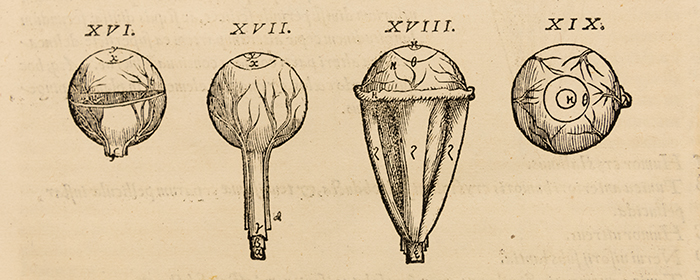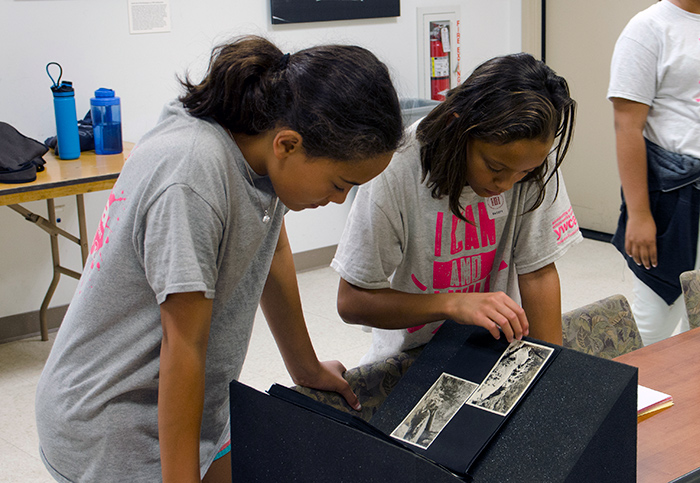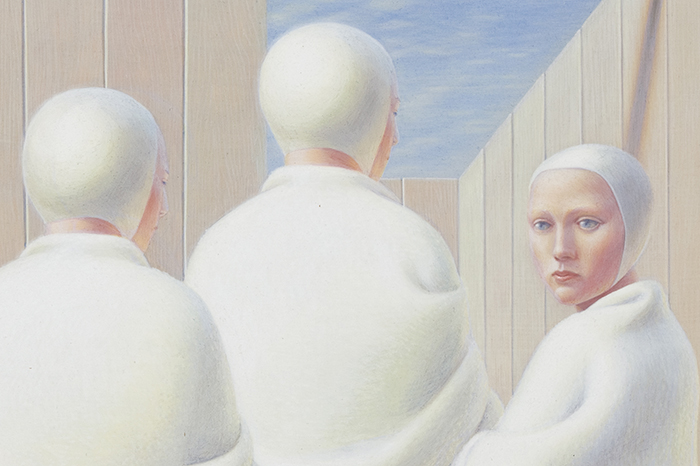The blog of The Huntington Library, Art Museum, and Botanical Gardens.
Stories Worth Revisiting
Posted on Wed., Dec. 27, 2017 by

A collage of Verso highlights from 2017.
Before we bid farewell to 2017 and welcome 2018, we’d like to highlight several stories published over the past 12 months that are among our favorites.
We launch our retrospective with one of our most popular stories of the year, an exploration of the tiny winged creatures known as fairies—written by Laura Forsberg, a 2016–17 National Endowment for the Humanities fellow at The Huntington. Surprisingly, the source of her research on the wee folk was the pages of The Huntington’s collections on the history of science and technology. Read “Fairy Hunting at The Huntington.”
In February, Ted Matson, The Huntington’s resident bonsai master, focused our attention on specimens we received from two bonsai experts. Al Nelson donated a rugged coast live oak, and Jim Barrett contributed a classic Chinese elm. Read “Two Gifts from Master Bonsai Artists.”
This year marked the second year of /five, The Huntington’s five-year contemporary art initiative. The exhibition “COLLECTION/S: WCCW/five at The Huntington”—on view in the Virginia Steele Scott Galleries of American Art through Feb. 12, 2018—is the manifestation of The Huntington’s yearlong partnership with the Los Angeles-based Women’s Center for Creative Work (WCCW). The exhibition features new work by seven artists, selected by WCCW, who produced the pieces following extensive research in The Huntington’s library, art, and botanical collections. For more on the artistic process they pursued, read “Women Making Art,” “Engaging with the Collections,” “Art Inspiring Art,” “Artists in the Library,” and “COLLECTION/S: WCCW/five at The Huntington.”

The 24 members of the petit jury impaneled by the United States Circuit Court for Virginia in Richmond for the treason trial of former Confederate president Jefferson Davis in May 1867. The Huntington Library, Art Collections, and Botanical Gardens.
Jenny Watts, curator of photography and visual culture at The Huntington, produced our most popular post of the year, a moving contemplation of an original Civil War-era photograph showing the 12 African American and 12 Anglo American jurists selected in 1867 for the trial of Jefferson Davis, the former president of the Confederate States of America. Read “The Power of Touch.”
We also updated you on “Decoding the Civil War,” a crowdsourcing project The Huntington launched, together with several partners, to transcribe and decipher almost 16,000 U.S. Civil War telegrams between Abraham Lincoln, his Cabinet, and officers of the Union Army. When we reported on the transcription phase of the project in April, it was at the halfway mark; we are happy to announce that the transcription phase has recently been completed. Read “Transcription Challenge for Civil War Telegrams.”
Kristi Westberg, the Dibner Book Conservator at The Huntington, shared her insights into the meticulous process she used to repair fragile areas on the pages of a 16th-century astronomy book that had been censored by the Catholic Church using corrosive ink. Those pages are on view through Feb. 26, 2018, in the West Hall of the Library as part of the exhibition “The Reformation: From the Word to the World.” Read “Preserving the Signs of Censorship.”

Detail from Andreas Vesalius’s idealized depiction of the shapes and sizes of the parts of the eye, and how they fit together. From Andreas Vesalius, De humani corporis fabrica (On the Fabric of the Human Body), 1543. The Huntington Library, Art Collections, and Botanical Gardens. Photo by Kate Lain.
The 2016–17 Dibner Fellow in the History of Science and Technology, Tawrin Baker, revealed the way 16th-century intellectuals perceived the eye and the process of sight by analyzing the groundbreaking anatomy book De humani corporis fabrica (On the Fabric of the Human Body) by anatomist and physician Andreas Vesalius. Read “Visualizing the Anatomy of the Eye.”
The papers of award-winning science fiction writer Octavia E. Butler (1947–2006) came to The Huntington in 2008. Today, the Octavia E. Butler Collection is one of the most actively researched archives at The Huntington. Ayana Jamieson, founder of the Octavia E. Butler Legacy Network and the awardee of the Helen Bing Fellowship at The Huntington, gave a preview of the conference that she co-convened in June to explore the evolving, transdisciplinary work that scholars have conducted based on Butler’s archives. Read “Mining the Archive of Octavia E. Butler.”
Last summer, we showed off our thriving Lily Ponds—among the first themed gardens developed at The Huntington—when they were at their seasonal peak after a major cleaning and restoration. The photos of vibrant blooms and colorful koi may make you long again for that time of year. Read “Flourishing Lily Ponds.”

During a four-week program at The Huntington during the summer of 2017, girls from the Pasadena YWCA had an opportunity to engage with the history of that organization through some unique historic materials in the collections, including archival photographs of their counterparts from the past century. The albums are part of the Library’s Pasadena YWCA Collection. Proper handling of archival materials was part of the lesson. Photo by Lisa Blackburn. The Huntington Library, Art Collections, and Botanical Gardens.
We shared an inspiring story about a group of 100 middle school girls in the YWCA’s Girls’ Empowerment Camp who got a chance to go behind the scenes in the Library for an up-close and personal encounter with materials from the collections. Read “Making History Personal.”
Julia Cury, an undergraduate at Princeton University who served as a curatorial intern in the Art Collections, gave us a rare glimpse inside hidden compartments of furniture in the Virginia Steele Scott Galleries of American Art. Read “Inside Secrets.”
Another art intern, Molly Curtis, a master’s degree candidate in art history at UC Irvine, contemplated why the painters George Tooker (1920–2011) and Edward Hopper (1882–1967) intentionally left out key narrative elements in their works. Read “Deliberate Omissions.”
We hope you have enjoyed learning more about The Huntington’s collections through Verso. Please join us next year for more stories that we hope will instruct and delight.

Detail from George Tooker's Bathers (Bath Houses), 1950, egg tempera on gessoed board, 20 3/8 x 15 3/8 in. The Huntington Library, Art Collections, and Botanical Gardens. Copyright Estate of George Tooker, Courtesy of DC Moore Gallery, New York.
Kevin Durkin is editor of Verso and managing editor in the office of communications and marketing at The Huntington.